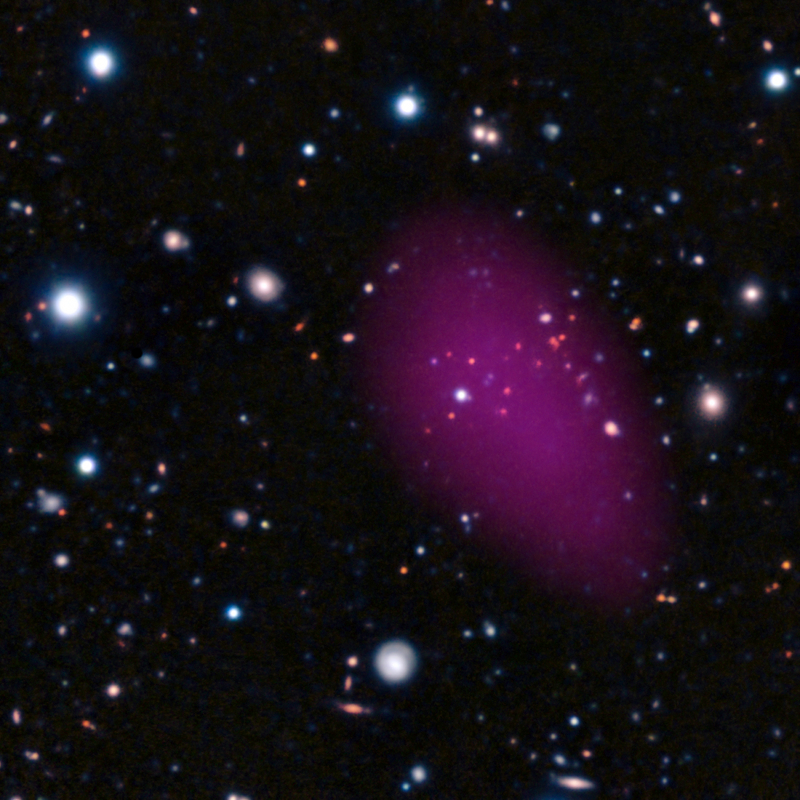
 Credit: ESA/ESO/Subaru/R. Gobat et al.
Credit: ESA/ESO/Subaru/R. Gobat et al.
Mature for Your Age
The hierarchy of the Universe is this: quarks, combined into baryons, combined into atomic nuclei, combined into molecules, combined into stars, combined into galaxies, combined into clusters of galaxies. Not to mention Dark Matter. But no matter, on the largest scales, clusters of galaxies, the largest organized structures possible, form the atoms of the Universe. Understanding how these clusters (and clusters of clusters) form the cosmic web is one of the driving quests of modern cosmology. X-ray observations are a good way to find clusters, since the deep gravitational well formed by the galaxies and dark matter bound to the cluster traps and holds immense amounts of extremely hot gas. This gas, at temperatures of millions of degrees, produces lots and lots of X-ray emission. Sensitive X-ray telescopes like the XMM-Newton X-ray Observatory are the tools of choice in this quest. In the image above, the purple glowing cloud is a false-color X-ray map of emission from a cluster of galaxies. The optical images of the individual galaxies making up this cluster are visible above too as the red points of light embedded within the purple cloud. Using the X-ray emission is an efficient means to identify clusters; the above cluster of galaxies is the most distant mature cluster yet found.
Published: March 14, 2011
<
HEA Dictionary ● Archive
● Search HEAPOW
● Other Languages
● HEAPOW on Facebook
● Download all Images
● Education ● HEAD
>

Each week the HEASARC
brings you new, exciting and beautiful images from X-ray and Gamma ray
astronomy. Check back each week and be sure to check out the HEAPOW archive!
Page Author: Dr. Michael F. Corcoran
Last modified Monday, 26-Feb-2024 17:35:37 EST


